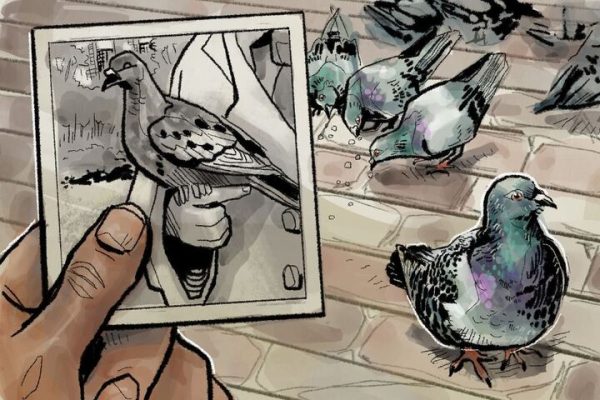Plugging into disconnect
The large red Netflix screen will be the death of me.
After spending a day at work interacting with computers, cameras and voice recorders under harsh fluorescent lights, all I want to do is spoon with my laptop and binge-watch “Mad Men.”
I’ve often wondered how much better a person I would be if I logged out and started on the list of projects I’ve stalled indefinitely. Or cracked open another book before I buy a new one online with the excuse that it wasn’t fast-paced enough.
I’m only actively enjoying it half of the time. The other half is spent passively zoning out until the icon pops up that counts down to the next episode. “Sure, why not?” I think, and another 50 minutes of my life vanishes while a stack of unread books gather an ever-thickening blanket of dust.
People too often associate technology with advancement. Because we have the capability, we had to put a touchscreen computer in the RSC that shows a map of the building, including where the bathrooms are. Never mind that a staffed information booth is just yards away.
Thanks to Google, we may soon be able to have cameras embedded in contact lenses to monitor blood sugar. At Dillons, the self-checkout machines often outnumber the number of cashiers. Besides lacking the familiarity of a human touch, the automatic machines can never tell when I’m using my own bags.
But unsettlingly enough, machines are becoming friendlier as time goes on. You can practically have a conversation with Siri, who gives entertaining responses when you insult her. Computers used to say, “The system is down” when encountering an error. Now, Twitter gives a FailWhale when it’s overloaded.
Technology is trying to recreate the human connection we’re missing out on while in front of glowing screens. You can get therapy, change your major, get jobs and find romance, all without leaving your bedroom. The people who take money at banks are being replaced with drive-through ATMs. “Liking” has been a virtual verb for some time now.
There isn’t a break in our entertainment. While cruising 35,000 feet above the world in the pinnacle of isolation, we can catch a movie or do an electronic Sudoku puzzle.
In class last week, someone mentioned an old photograph of commuters reading on a train. It dates back to around 1955. The photo shows a sea of hats, each man engrossed in his newspaper and quietly ignoring the human next to him. Half a century before the Smartphone, we still preferred not to interact.
It’s in human nature to be awkward and private. Technology is just another distraction that lets us off the hook.







